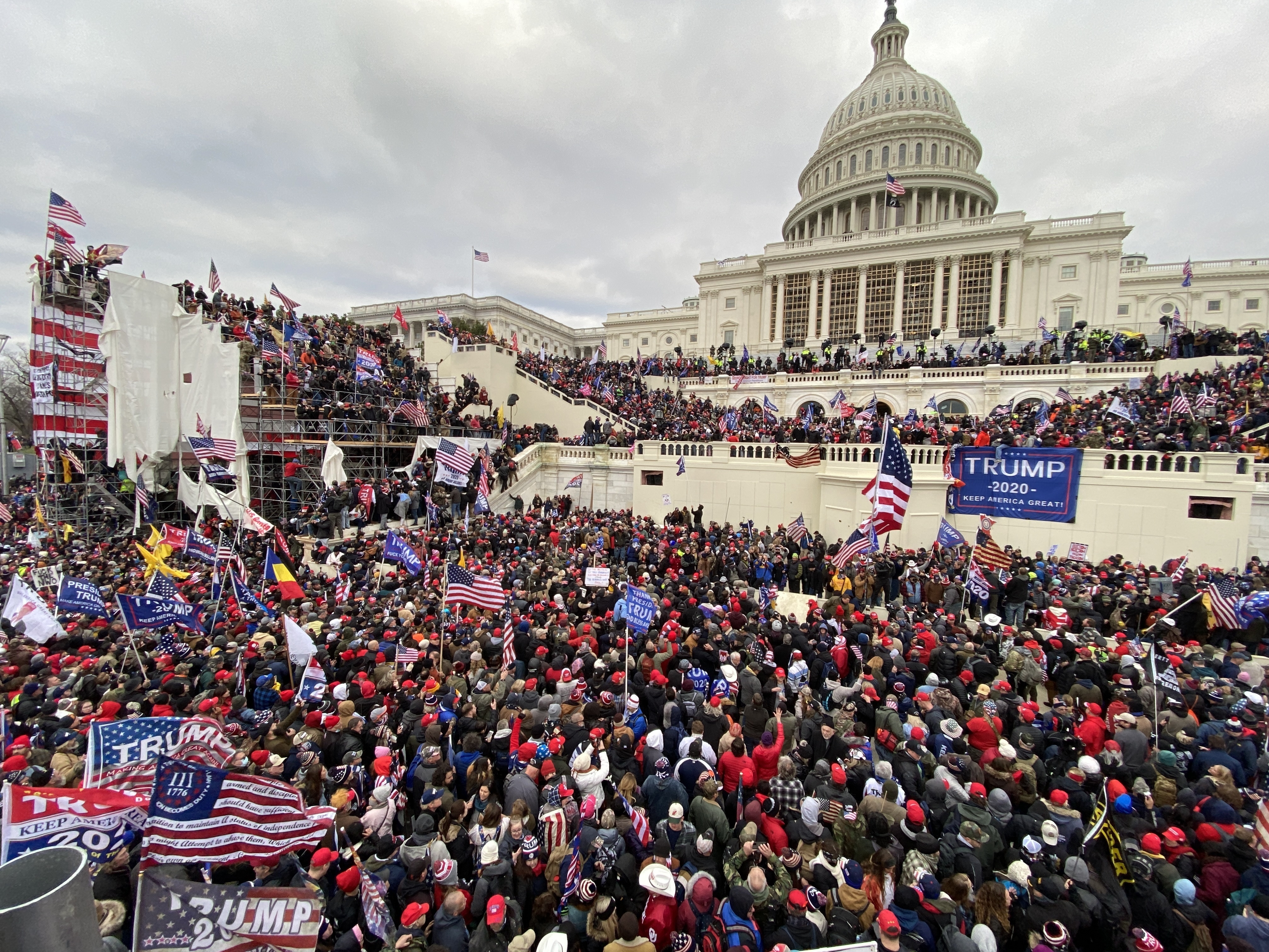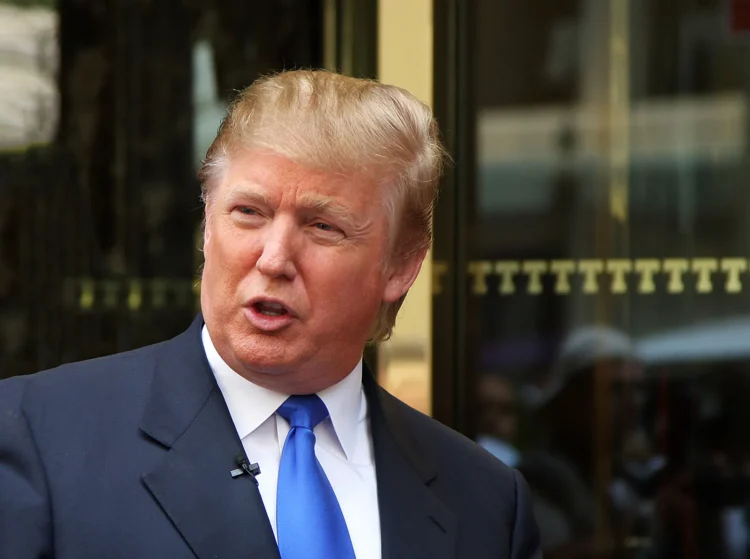By Aaron Miller-
The congressional panel investigating last year’s attack on the US Capitol has accused former President Donald Trump of a “multi-part conspiracy” to overturn his election defeat three months earlier.
The panel released its final 845-page report on the attack, laying blame for the 6 January 2021 storming of Congress squarely on the former president.
It also recommends barring Mr Trump from public office in the future. Trump is vying for election in the 2023 elections.
The findings of the panel could be significant in putting a ceiling over Donald Trump’s political career.
At Monday’s meeting, chairman Bennie Thompson said: “The committee is nearing the end of its work, but as a country we remain in strange and uncharted waters. Nearly two years later this is still a time of reflection and reckoning.”
He added: “We have every confidence that the work of this committee will help provide a roadmap to justice.”
He did not co-operate with the panel and declared the final report a “witch hunt” after its release.
After that session, Trump remained defiant. “These folks don’t get it that when they come after me, people who love freedom rally around me,” he said in a statement. “It strengthens me. What doesn’t kill me makes me stronger.”
In comments posted on the former president’s Truth Social network after the final report’s release, Trump called it “highly partisan” and a “witch hunt”. He said it failed to “study the reason for the [January 6] protest, election fraud”. Trump falsely claimed the report didn’t include his statement on 6 January that his supporters should protest “peacefully and patriotically”
Public Hearings
The committee held ten public hearings and interviewed more than 1,000 witnesses over a stretch of 18 months, including Trump administration officials and staff, Trump family members, Capitol police officers, rioters, militia members, and more.
Its release comes just three days after the select committee recommended criminal charges against Trump and follows media reports that it is cooperating and sharing crucial evidence with the justice department.
The panel, which will dissolve on 3 January when Republicans take control of the House of Representatives, conducted more than 1,000 interviews, some of which was televised in prime time – and collected more than a million documents since forming in July last year.
On Monday, the panel of seven Democrats and two Republicans recommended the justice department investigate Mr Trump – who is mounting another White House campaign – for aiding an insurrection and three other federal crimes.
The Democratic chairman of the select committee, Bennie Thompson of Mississippi, wrote in a foreword to the eight-chapter report that it was once “unimaginable” the president of the United States would incite a mob to march on the Capitol.
The committee made six key findings, released on Thursday night which included that Trump made false claims which aides told him were untrue.
The committee also found that Mr Trump’s decision to falsely declare victory on election night 2020 was “premeditated”, and that only his lawyer, Rudy Giuliani, supported this action,
The committee made reference to interviews with several advisers and lawyers close to Mr Trump, who say they did not believe these claims of fraud or could find no evidence of the phenomenon.
Former Attorney General William Barr told the committee during a deposition: “I made it clear that I did not agree with the idea of saying the election was stolen and putting out this stuff, which I told the president was [expletive.]”
The president continued to sow election conspiracies over the coming weeks, though top Trump administration officials testified they informed him the claims were not true.
The committee concluded that the argument that the attack on the Capitol was sparked by Mr Trump himself.
In addition to Mr Trump’s repeated fraud claims, the committee points to a 19 December 2020 tweet, in which the former president wrote: “Big protest in DC on January 6th. Be there, will be wild!”
In depositions and court documents, rioters and militia members who were present at the Capitol that day cited Mr Trump’s tweet as their rationale for coming to Washington.
Protesters prepared to match to Capitol Hill
The committee cited men like Robert Morss, who was found guilty of assaulting officers during the Capitol breach. Mr Morss “believed January 6th stood for the moment when ‘1776 Will Commence Again’ because President Trump asked them to ‘Be there, Will be Wild'”, the report states.
The committee also cites Secret Service warnings that people were planning to come to Washington on January 6 and threatening to “be wild”.
Its report presented an in-depth and detailed account of Trump’s effort to overturn his defeat by Joe Biden in the 2020 presidential election and what the panel says was his culpability for a violent insurrection by his supporters.
The panel made the case that Trump knew he lost but still pressured both state officials and Vice President Mike Pence to overturn the election, then “was directly responsible for summoning what became a violent mob” and refused repeated entreaties from his aides to condemn the rioters or to encourage them to leave.
“The central cause of January 6th was one man, former President Donald Trump, who many others followed,” the document’s executive summary says. “None of the events of January 6th would have happened without him.”
Pressure Or Condemnation Targeting
In the two months between election and insurrection, the committee estimates, Trump or his inner circle engaged in at least 200 apparent acts of public or private outreach, pressure or condemnation targeting either state legislators or state or local election administrators.
It included at least 68 meetings, phone calls or text messages, 18 instances of prominent public remarks and 125 social media posts by Trump or senior aides.
The former president even told the rioters ”you are very special, we love you’.’
Communications
The committee also cites communications between lawmakers trapped in the Capitol and White House chief of staff Mark Meadows, who was receiving an increasingly desperate barrage of pleas from members of Congress who were forced into hiding.
Texts from Hope Hicks, one of Mr Trump’s most loyal aides, summed up the dismay among staff at the White House.
Ms Hicks texted Ivanka Trump’s chief of staff, Julie Radford, after the riot saying “we all look like domestic terrorists now”.
She also texted a White House lawyer: “I’m so upset. Everything we worked for wiped away.”
The report notes that the FBI was sent messages circulating on groups run by the far-right Oath Keepers and Proud Boys. They were orchestrating how to target Washington, and even Capitol Hill.
“There is only one way. It is not signs. It’s not rallies. It’s [expletive] bullets,” said one.
Focus
Capitol Police and Secret Service agents – who are responsible for protecting the president – received similar messages from insiders and others. Some specifically named the Capitol as a focus for potentially violent activity.
Some of the chatter came from private encrypted chat apps, but other messages were publicly visible on pro-Trump websites and Twitter.
Members of the far-right groups ended up among the crowds inside the Capitol on 6 January.
Alongside the report, the committee released dozens of raw transcripts of testimony provided by witnesses in closed-door sessions.
Testimony from others – including Oath Keepers founder Stewart Rhodes and Proud Boys leader Enrique Tarrio – indicated mutual suspicion, infighting, and conspiratorial thinking among the far-right factions involved in the riot.
Rhodes was convicted of seditious conspiracy and other charges last month and potentially faces decades in prison, while Mr Tarrio is currently on trial.
On 6 January, Mr Trump attempted to call Mr Pence, shouting at aides to get him on the phone, the report states. The former president then falsely told Mr Pence he had the power to intervene in the certification.
Witnesses told the committee that at one point, Mr Trump called the vice-president a “wimp” and said he was “not tough enough”.
Addressing a crowd on 6 January, Mr Trump said he hoped Mr Pence would “do the right thing”. Later, in the midst of the attack, rioters would chant “Hang Mike Pence” as they stormed the Capitol.
One cites the constitution, which states an individual who has taken an oath to support the US Constitution but has “engaged in an insurrection” or given “aid or comfort to the enemies of the Constitution” can be disqualified from office.
Criminal Referrals
At its final public session, the panel unanimously made four criminal referrals to the justice department against Trump for his role in the insurrection with his false claims of a stolen election and ended in the mob siege of the US Capitol. It was the first time in American history that Congress had taken such action against a former president.
The Democratic-controlled House formed an investigative committee of its own, comprising seven Democrats and two Republicans: Liz Cheney of Wyoming and Adam Kinzinger of Illinois, after Senate Republicans blocked the formation of what would have been a bipartisan, independent commission to investigate the insurrection
He urged supporters to come to Washington for a “big rally” on January 6, inciting them through a speech outside the White House, encouraging them to ”fight like hell”, despite knowledge that sum of them were armed.

